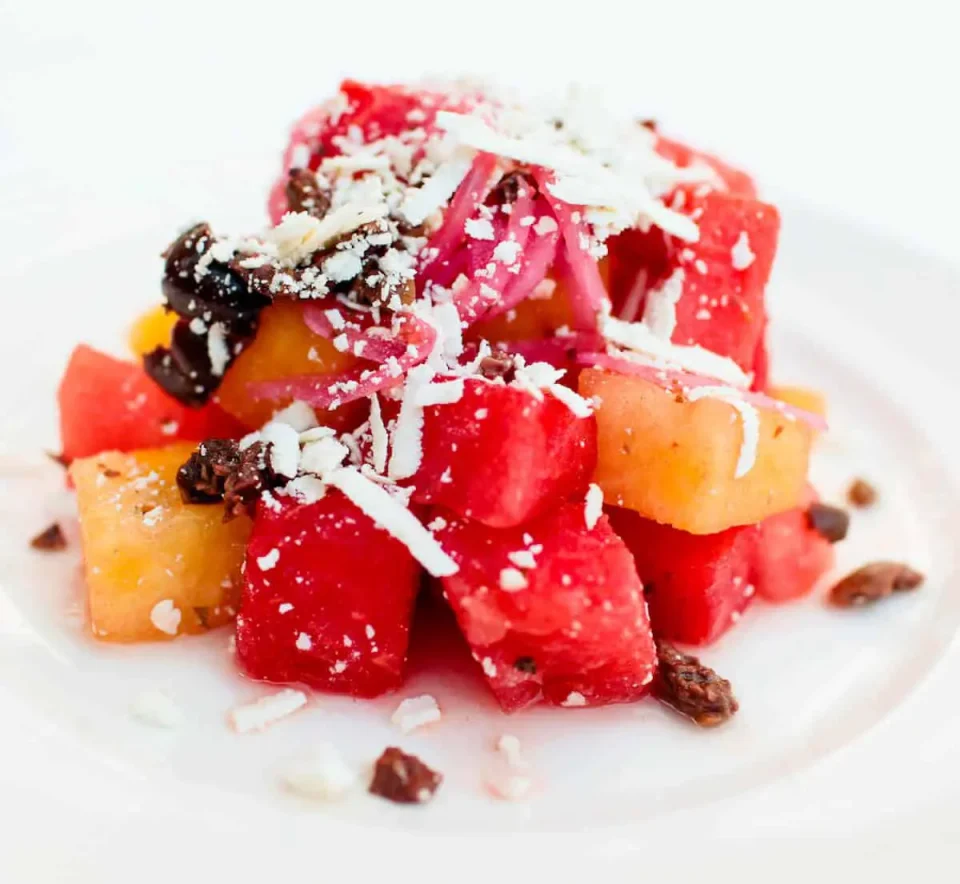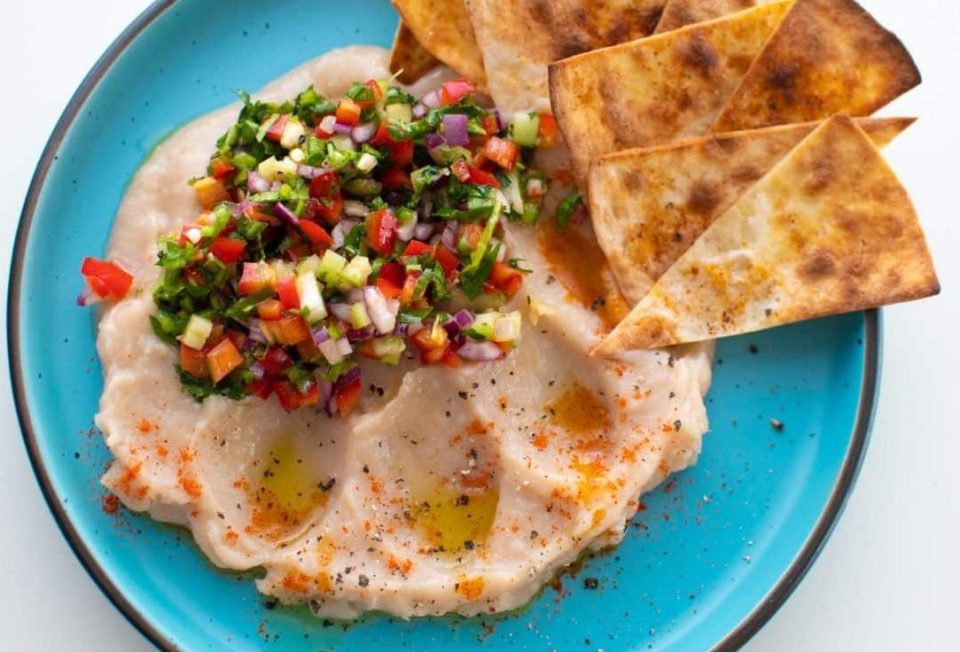Launched 124 years ago, the Michelin Guide continues to be world’s most prestigious restaurant rating system. It has substantially increased its geographic coverage over the past few years, now featuring 3,500+ Michelin-starred restaurants in over 40 countries and territories.
Every food enthusiast dreams of dining at a Michelin-starred restaurant, hoping to indulge in the highly sought-after tasting menus which are renowned for their opulence; this is a hallmark of luxury establishments, and especially those bearing Michelin stars. These menus typically consist of a series of carefully curated dishes, often small portions, designed to showcase the chef’s creativity and skill using the finest ingredients available.
But dining out at a Michelin-starred restaurant can can come with a steep cost. Three years ago our team began collating and analyzing prices at all two- and three-starred restaurants. This time, we went further and included one-stared Michelin restaurants.
All in all, we studied the menus of 3,517 Michelin-starred restaurants (one, two and three stars) in all countries and territories covered by the guide (a total of 41). We particularly wanted to look at their tasting menus, and where more than one tasting menu is offered, we selected the priciest ones.
Unlucky for us, we couldn’t actually visit each restaurant. So we had to rely on the prices displayed on the restaurants’ websites and reservation apps. When unavailable, we trawled various media outlets, blogs, diner reports published on Google Maps, and other restaurant review websites to bring you as much information as we could. For more details, check out our methodology section at the end of the report.
We used the median value to report on aggregate numbers (in our prior report we used the mean), as we find this more representative of local markets. But, for simplicity, we refer to the median as the average throughout this report.
$100: The Cost for Every Additional Star
Experiencing the premium tasting menu at a Michelin-starred restaurant doesn’t come cheap. Our analysis shows that the median for the 3,300+ Michelin restaurants included in our analysis is $179 (€167). Prices are per person and don’t generally include drinks, government charges or tips. The mean is closer to $200 ($198 to be more specific) as it’s skewed by a significant number of restaurants with stratospheric prices.

As expected, you’ll generally pay more for two- and three-starred Michelin restaurants. Interestingly the average difference is almost a full $100 for each additional Michelin star. On average it costs $165 (€155) to experience the premium tasting menu at an one-star Michelin restaurant, $256 (€240) for a two-starred restaurant and $356 (€334) for three-starred restaurants.
Most and Least Expensive Countries and Territories
Besides the number of stars, geography plays a huge role in Michelin-starred restaurant pricing. Denmark remains the world’s most expensive place to dine out at a Michelin-starred restaurant, in spite of the Michelin Guide geographic expansion to other pricey countries such as the U.A.E. It costs on average $314 (€295 or 2,200DKK) to experience the premium tasting menu in Danish Michelin restaurants. It’s even more expensive if we single out the Danish capital, but more on that later.
In spite of the sky-high prices, Denmark has established itself as one of world’s top gourmet destinations and many foodies flock to this Nordic country to experience some of the most creative fine dining in the world. The country is home to 32 Michelin restaurants, including two with the highly coveted three Michelin stars, and its restaurants have topped other prestigious industry rankings for years.

Hong Kong SAR ranks second among the most expensive countries and territories for dining out at a Michelin restaurant. This Asian culinary powerhouse needs no introduction – it’s long been one of the most sought-after culinary destinations, and it’s also known as one of the most expensive places to live (ranked first in the latest report published by Mercer).
The Nordic island nation of Iceland has been recently added to the Michelin Guide. Three of its restaurants have been awarded a Michelin star, not a bad feat for a nation with a population of roughly 380,000 residents. As with other things in Iceland, fine dining is expensive. It costs $248 (€233 or 34,990ISK) on average to experience the top tasting menu.
Singapore ranked second in our previous 2021 report, and it continues to be one of the most expensive countries for fine dining in the world, as well as one of the most expensive places to live. But as the saying goes, “you get what you pay for,” and this stands true for the quality of life in Singapore, as well as its fine dining scene.
Singapore is home to some amazing Michelin restaurants, 53 in total, with nine of them holding two or three stars. It’s also one of the ten leading cities with at least three three-star rated Michelin restaurants.
The United States ranks fifth worldwide among the most expensive countries. It costs $227 per person on average to dine out at a Michelin restaurant in the US if you opt for the most expensive tasting menu. This is substantially more than the $20 that roughly half of Americans reportedly were spending for dinner in 2023.
However, although the Michelin Guide expanded their coverage in the US, it is still limited to a few cities and areas such as New York, the Bay Area and South Florida, which are known for their significantly higher than average cost of living and dining costs.
At the other end of the scale, if you are looking for a bargain, head to Vietnam. It only costs $130 on average to dine out at a Michelin restaurant, though you’ll find your options limited. The Michelin Guide was first launched in Vietnam in 2023, and four local restaurants were awarded the coveted Michelin star.
For more options and more affordable Michelin meals, head to Brazil. It’s two largest cities, São Paolo and Rio de Janeiro, are home to 13 Michelin restaurants where the priciest tasting menu costs on average just $131 (€124 or 680 Brazilian reals). More on São Paolo and Rio de Janeiro later.
For affordable Michelin-star meals in Europe head to the sunny Mediterranean, more specifically, go straight to Malta and Greece. The small island nation of Malta is home to five Michelin restaurants and it’s the more affordable place in Europe to dine out (€125 euro per person) at one of these luxury restaurants.
Greece comes second in Europe with an average cost of $140 (€132) for dining out at one of its 12 Michelin restaurants, all located in Athens, which is the extent of Michelin Guide coverage in the country.
Most and Least Expensive Cities for Fine Dining
Copenhagen is undisputedly the most expensive city in the world for fine dining. The most expensive tasting menu in Denmark's capital costs on average $443 (€416 or 3100DKK) per person, not including drinks.
The city is home to 14 Michelin-starred restaurants, with eight of them holding two or three stars. Over the past couple of decades it has transformed itself into a culinary mecca, home to the legendary Noma, long considered the best restaurant in the world (which has, incidentally, announced its closure at the end of the year) and other amazing establishments such as Geranium and The Alchemist.

Macao, the world's gambling capital, has one of the highest densities of Michelin-starred restaurants per mile in the world and it's the second most expensive city in the world. It is home to 16 Michelin-starred restaurants, with eight of them holding two or three stars. It costs an average of $283 (€265) to experience the most expensive tasting menu or 2,280 MOP, Macao's local currency.
Hong Kong has always been a top culinary destination, and it has the third largest number of three stars Michelin restaurants in the world (next to Paris and Tokyo). The city is also famous for its stratospheric real estate prices and its fine-dining scene is equally expensive, ranking the city third in the world.
San Francisco is the most expensive city for fine dining in North America and fourth worldwide. To experience the most expensive tasting menu in the city, it will cost you on average $263. San Francisco and the Bay Area have long been among the world's top fine-dining destinations. San Francisco has the second number of Michelin restaurants in the Americas, after New York.
Dubai has established itself as a global finance and tourism hub with culinary excellence emerging as a natural progression for the emirate. It's fine-dining scene is as diverse as its resident population: French, Italian, Chinese, Indian, Japanese, Portuguese and British-inspired cuisine count among the emirate's 14 Michelin-starred restaurants.
Like its luxurious hotel accommodation, indulging in the finest gastronomic experiences the city has to offer comes at considerable cost. The priciest tasting menu costs on average $259 (€243) per person.
For a more affordable luxury dining experience, head to Chengdu and Hangzhou in China. You won't be disappointed. Chengdu is the capital of the Sichuan province and the birthplace of the world-famous Sichuan cuisine. Chengdu was honored as a UNESCO city of gastronomy to celebrate its culinary heritage and sophistication.
Hangzhou is another Chinese city with a fantastic culinary heritage, home to Hangzhou and Zhe cuisine, one of China's eight culinary traditions.
Vancouver, Canada ranks surprisingly as the second least expensive city for fine dining. The Canadian city has a fantastically diverse dining scene and has consistently ranked as one of the best foodie destinations in the world. While locally it's known for sky-high real estate prices, when it comes to fine dining, it's quite a bargain (from a global perspective).
On average it costs $114 USD ($155 CAD) to experience the most expensive tasting menu in Vancouver's nine Michelin restaurants. It's almost twice more expensive in Toronto, the other Canadian city covered by the Michelin Guide, and other American cities on the Pacific Coast.
The Brazilian mega-cities of São Paolo and Rio de Janeiro are two other top culinary destinations where you can enjoy a Michelin meal at affordable rates. It costs on average $115 (€108 or 596 Reals) to enjoy the priciest tasting menus in São Paolo's Michelin restaurants.
São Paolo metro area is home to about one million ethnic Japanese, so if you're looking for Michelin-worthy sushi and sashimi at more affordable rates, this is the place to be. There are four Michelin-starred Japanese restaurants in the city where the tasting menu is priced on average for 488 Brazilian reals (roughly $95 USD or 89 euros).
Most Expensive Alpine Resorts, Lakeside and Beach Towns
Skiing goes hand in hand with good food and Michelin restaurants abound in posh ski resorts. Courchevel, a luxury ski resort in the French Alps with a resident population of roughly 2,000, is home to seven Michelin restaurants, more than Venice, Brussels or Atlanta.
Saint Moritz, the luxury Swiss ski resort, is home to five Michelin restaurants, on a par with Rio de Janeiro, while Baiersbronn in Germany, has four Michelin restaurants, two of them with three Michelin stars. This small town in the German Black Forrest mountains has as many three-stared Michelin restaurants as Chicago, Copenhagen, or Shanghai.
The most expensive ski resort for fine dining is Megève, a French ski report in the Mont Blanc massif, where the costliest tasting menu costs on average $314 (€295). Megève is followed by Courchevel, Baiersbronn and St. Moritz.
There is no shortage of Michelin restaurants in upscale beach towns either, especially on the Mediterranean. But the two most expensive are not actually on the Mediterranean, but reside in a beautiful Swiss lakeside resort on Lake Maggiore – Ascona – and glitzy Miami Beach in Southern Florida.
Mapping the Trends: Visual Insights into Global Dining Costs
In this section, we delve deeper into the data with four additional maps, providing a comprehensive overview of dining costs across different regions.




How to Eat (More) Affordably at Michelin Restaurants
Our research focused on prices for the dinner tasting menu. But if you are really looking for a bargain, go for a lunch menu. These are usually substantially cheaper than dinner, though not all restaurants offer a lunch service. If you are determined to go for the dinner menu, you might get a nice discount by going mid week rather than the weekend, when it's generally more crowded.
Don't be put off by the prices. We focused on the most expensive tasting menu, and many Michelin restaurants also offer more affordable tasting menus with three or four courses. You could also go for restaurants that offer an a la carte menu where you'll find more affordable dishes that won't break the bank. It's also worth looking at the vegetarian menu (when available) as a way to reduce the bill.
Drinks can be a large expense on a restaurant bill, and especially so for Michelin-starred establishments, so opting for moderation will definitely pay off.
Methodology
Our team researched the menus of 3,517 Michelin-starred restaurants (one, two and three stars) in all countries and territories covered by the guide and were able to find pricing data for 3,309 of those restaurants. The research was conducted between March 20th and April 19th 2024.
We included in our analysis restaurants that offer a tasting menu and when more than one tasting menu was offered, we selected the priciest one. The prices collected by our researchers are per person and mostly do not include drinks, service charges or gratuity. Service charges and gratuity customs differ from country to country and combined they can range from zero to 30%+ depending on country and establishment.
We did not include the price for extras (caviar is a popular choice), though we included caviar-heavy tasting menus when they were presented as stand-alone prestige tasting menus.
Our research primarily relied on prices displayed on the restaurant's websites and reservation apps. When unavailable, we included information from various media outlets, blogs and recent dinner reports published on Google Maps and other restaurant review websites. In mainland China, we complemented the pricing data from DianPing, a popular restaurant review app. For mainland China restaurants we have not been able to confirm the availability of tasting menus for many restaurants and the prices may in some cases reflect the average dinner price rather than the price of the most expensive tasting menu on offer.
For restaurants located in alpine or seaside resorts only open for the season, we included, where available, prices from the past season (2023-2024).
In our country rankings, we included countries with at least three Michelin-starred restaurants that offer a tasting menu. As a consequence, Czechia, Estonia, Latvia were not included in our country rankings. Moreover, micro-countries and territories such as Monaco and Macau (SAR) were not included in the countries and territories rankings.
The same threshold of a minimum of five Michelin-starred restaurants was used for our city rankings. For our alpine and beach resort rankings, as well as our North American city map, the threshold was lowered to a minimum of three Michelin-starred restaurants.
Prices were researched in local currency and were converted to USD and Euro using the currency exchange rate reported by Bloomberg on April 19th. An exception was Argentina, where we used the blue dollar rate reported by https://bluedollar.net on April 19th.
We used the median value to report on aggregate numbers as we considered the median value to be more representative for local markets. For the simplicity of our reporting, we refer to the median as the average throughout this report. In our previous report published in 2021, we used the average (mean) value. Values were rounded up.
Price changes for some individual restaurants have occurred during our research phase, and restaurants will continue to update their menus and offerings, but these pricing updates should not have a sizable impact on the average values reported.
For questions about this report please contact us at chef@chefspencil.com.
Fair Use and Redistribution
Chef’s Pencil grants you permission to reuse, host, or repost the graphics and images from this article. When doing so, we ask that you kindly attribute the authors by linking to Chef’s Pencil or this page.
The post Exploring Michelin Dining Costs Across 40 Countries: A Global Analysis appeared first on Chef's Pencil.
from Chef's Pencil https://ift.tt/E81mYLy
via https://chefsspenncil.blogspot.com















